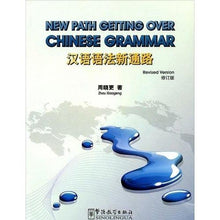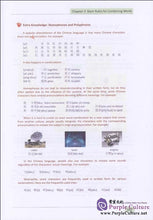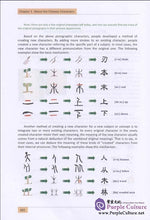Maybe you have dreamed of being a proficient Chinese speaker without suffering headaches from rote learning and sterile sentence drills. This book will surely help you achieve this goal by showing a new vision as well as practical knowledge and skills. Enjoy Learning, Enjoy Communication are the ultimate goals of this book. You will find some outstanding insights and helpful assistance in the following. Rudiments: In this book you can find quite a few of sections focusing on the analysis and elaboration of the mechanisms of the backbones in this language, which blow away hazy frog shrouding the path through the labyrinth. Simplicity: This book provides a distinct overview of the language that helps you integrate pieces of knowledge into your future learning. You will find a series of rules in this book that ensure your easy and joyful learning. Efficiency: In this book, you will also find lots of formula-like structures showing you some basic skills for your quick application. There are many practical examples and cases, titled as Extra Knowledge in the end of each section, covering the most popular applications and phenomena in daily language. Simplified Chinese Characters.
"汉语语法新通路" 的修订版和大家见面了,修订版在延续第一版的理论基础和内容框架的基础上,大量增加了新的内容,包括理论本身的改进、增加诸多实用的功能、增加大量范例等等,内容扩充了近一倍。无论如何,这本书的目标没有变化,还是想让海外的汉语学习者能够“一看就懂,一学就用”,真正发挥语法应有的功能,让学习汉语更富效率。
“大道至简”。正是因为汉语的简单,使她得以传袭数千年,始终成为聚拢中华大家庭最为重要的纽带。“简”的外在表现是汉语极具特色的语法规则,“简”的核心在于极其人性化的语言思维与组织方式,而这种独特的思维方式背后则是中华民族精妙的哲学。
“道生一,一生二,二生三,三生无数”这句话,应当是对汉语语法内在特质最为精当的概括。本书力求简单实用,向海外学习者展现汉语智慧与美,彰显运用之便利,以帮助海内外学习者轻松高效掌握汉语基础应用。
目 录
Chapter 1 About the Chinese Characters
Chapter 2 Creating New Words
Chapter 3 Basic Rules for Combining Words
Section 1:Where Both Words Refer to Objects
Section 2:Where Words Refer to Objects and States
Section 3:Where Both Words Refer to States
Section 4:Where Both Words Refer to Actions
Section 5:Where Words Refer to Objects and Actions
Section 6:Where Words Refer to States and Actions
Section 7:SummarV
Chapter 4 Advanced Skills in Application
Section 1:The Construction of Complex Words
Section 2:Principles and Practical Skills
Chapter 5 Sentence Construction
Section 1:mypical structure:Orders and Suggestions
Section 2:mypical Structure:Describing the Actions
Section 3:Typical Structure:Describing the Subject
Section 4:TVpical Structure:Describing Existence
Section 5:Special Structures
Chapter 6 Specifying Tenses
Chapter 7 Raising a Question
Section 1:Questions Requiring Confirmation
Section 2:Questioning Specific Components
Chapter 8 Constructing Complex Sentences
Chapter 9 Advanced Skills in Making Sentences






